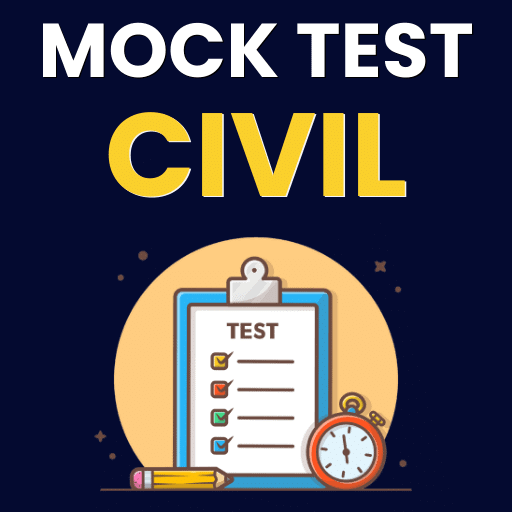Graphite and Diamond | Chemistry for Grade 11 (IGCSE) PDF Download
Structure of Graphite & Diamond
- Diamond and graphite are allotropes of carbon with giant covalent structures.
- allotropes giant covalent structures
- Although both substances consist solely of carbon atoms, their distinct bonding arrangements result in stark physical differences.
- Giant covalent structures feature billions of non-metal atoms, each linked to neighboring atoms through covalent bonds, creating a vast lattice structure.
Diamond
- In diamond, every carbon atom forms bonds with four other carbon atoms, resulting in a tetrahedral structure.
- All the covalent bonds are uniform, highly robust, and there are no intermolecular forces present.

Graphite
- In graphite, every carbon atom forms bonds with three others, creating layers composed of hexagonal structures.
- This bonding arrangement results in one free electron per carbon atom, which becomes delocalized.
- While the covalent bonds within the layers are robust, the layers themselves are attracted to each other by weak intermolecular forces.

Uses of Graphite & Diamond
 |
Download the notes
Graphite and Diamond
|
Download as PDF |
Properties of Diamond
- Diamond possesses unique physical properties:
- It does not conduct electricity.
- It boasts a remarkably high melting point.
- Diamond is exceptionally hard and dense.
- The structure of diamond:
- All the outer shell electrons in carbon are secured within the four covalent bonds around each carbon atom, preventing the flow of electricity.
- The strong covalent bonds form an extensive lattice, demanding substantial heat energy to break, contributing to its high melting point.
- Applications of Diamond:
- Diamond's hardness renders it invaluable for demanding applications necessitating tough materials.
- It is widely used in jewelry due to its dazzling appearance and as cutting implements owing to its hardness.
- Utility in cutting tools:
- The cutting surfaces of discs utilized for cutting bricks and concrete are often embedded with diamonds.
- Heavy-duty drill bits and tooling equipment are frequently equipped with diamond tips.
- Jewelry and Cutting Tools:
- Diamond, being the hardest naturally occurring mineral, is frequently mistaken for being the strongest.
- Contrary to popular belief, hardness does not equate to strength. Diamonds, while hard, are brittle and can be easily shattered.
- It is essential to distinguish between hardness and strength, as hardness refers to resistance to scratching, while strength signifies resistance to breaking under force.
Edurev Tip: Diamond, while being the hardest naturally occurring mineral, does not qualify as the strongest. There is a common misconception among students who equate hardness with strength, mistakenly considering them as opposites of weakness. Although diamonds are hard, they are also brittle, meaning they can be shattered relatively easily with a hammer. Conversely, describing a material as soft is the opposite of characterizing it as hard.
Properties of Graphite
- Each carbon atom in graphite is connected to three others, creating layers of hexagonal shapes, with one free electron per carbon atom.
- These free electrons are delocalized between the layers, allowing them to move freely throughout the structure, enabling graphite to conduct electricity.
- While the covalent bonds within the layers are strong, the connections between the layers are weak, enabling the layers to slide over each other, giving graphite its slippery and smooth characteristics.
- Graphite exhibits the following properties:
- Conducts electricity
- Has a high melting point
- Is soft and slippery, with lower density compared to diamond
- Applications of Graphite:
- Graphite is commonly used in pencils due to its ability to leave marks on paper with ease.
- It serves as an industrial lubricant in various applications such as engines and locks.
- Graphite is utilized to create non-reactive electrodes for processes like electrolysis.
Edurev Tip: Do not mistake pencil lead for the metal lead, as they share no similarities. Pencil lead is actually composed of graphite. Historical investigations indicate that lead miners occasionally mistook the mineral galena (lead sulfide) for graphite due to their similar appearance, hence referring to both minerals as 'lead'. The term "graphite" originates from the Latin word 'grapho', meaning 'I write', making it aptly named.
|
103 docs|53 tests
|
FAQs on Graphite and Diamond - Chemistry for Grade 11 (IGCSE)
| 1. What is the chemical structure of graphite and diamond? |  |
| 2. What are the main uses of graphite and diamond? |  |
| 3. How do the properties of graphite and diamond differ despite both being forms of carbon? |  |
| 4. What are the differences in the bonding in graphite and diamond that result in their distinct properties? |  |
| 5. Can graphite be converted into diamond, and vice versa? |  |































